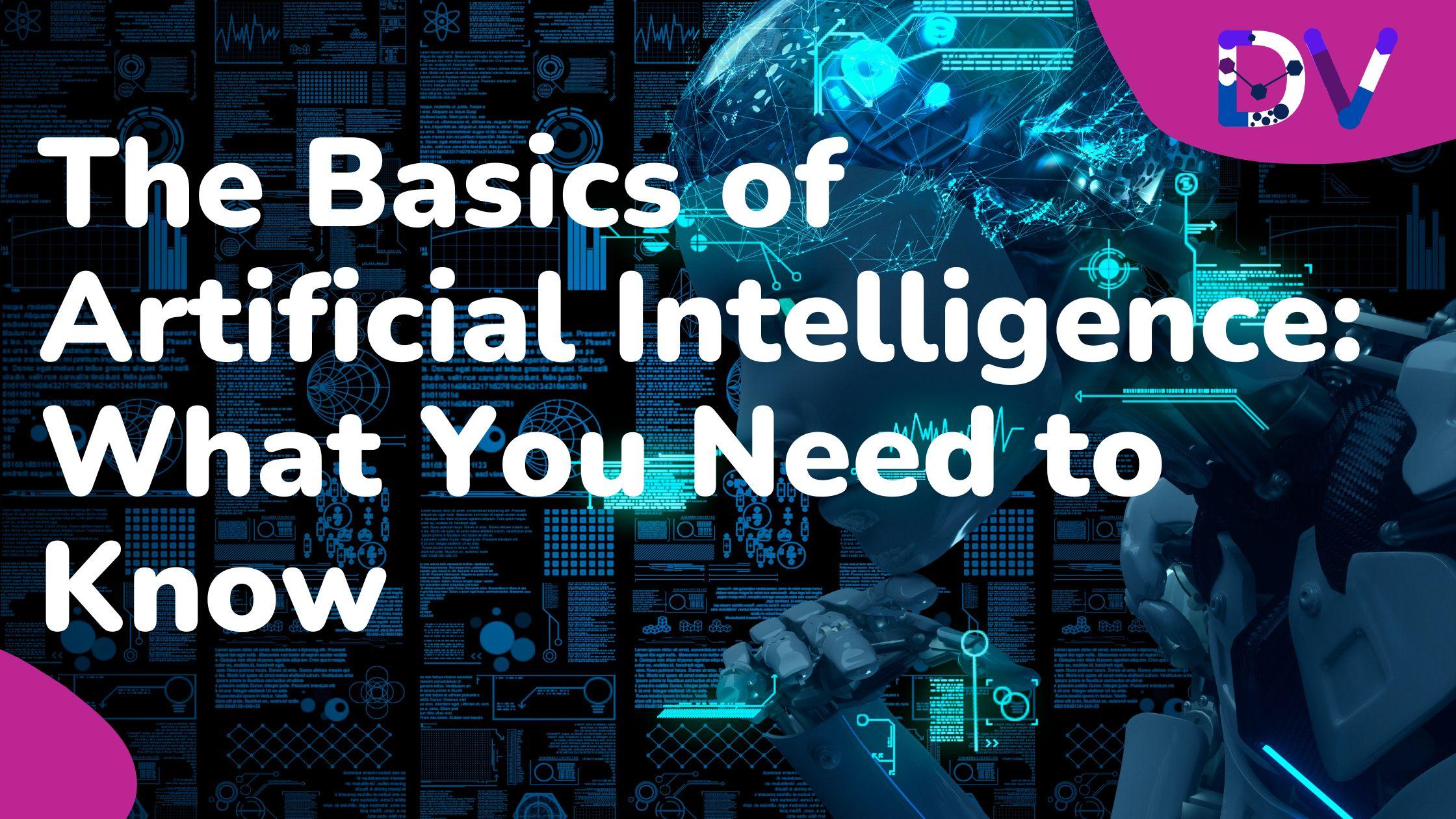

Newsletter
Artificial intelligence (AI) is a rapidly growing field that is revolutionizing how we live and work. From self-driving cars and virtual personal assistants to medical diagnosis and financial analysis, AI is used in many applications to make our lives easier and more efficient. But what exactly is AI, and how does it work? In this article, we’ll look at the basics of artificial intelligence, including its history, key concepts, and the field’s current state.
What is Artificial Intelligence?
At its core, artificial intelligence is the ability of a machine to mimic human intelligence and behavior. This includes tasks such as learning, problem-solving, decision-making, and even creativity. AI systems can analyze data, recognize patterns, and make predictions or recommendations based on that analysis. They can also interact with humans and other systems in a way that is similar to how a person might, using natural language processing and other techniques.
AI can be classified into two main categories: narrow and general. Narrow AI is designed to perform a specific task or set of tasks, such as facial recognition or language translation. These systems are trained to do one thing really well, but they are not capable of adapting to new situations or tasks. General AI, on the other hand, is designed to be more flexible and adaptable. These systems have the ability to learn and adapt to new situations and tasks, and can even improve their performance over time.
History of Artificial Intelligence
The concept of artificial intelligence has been around for centuries, with some of the first recorded references dating back to the ancient Greeks. However, it wasn’t until the mid-20th century that AI began to take shape as a field of study. In 1956, a group of researchers at Dartmouth College held a conference on the topic of artificial intelligence, which is often considered the birth of the field.
Over the years, AI has gone through several phases of development, with each phase marked by significant advancements and breakthroughs. In the 1950s and 60s, AI focused on developing programs that could perform simple tasks, such as solving math problems or playing chess. In the 1980s and 90s, AI began to focus on natural language processing and expert systems, which were designed to mimic the decision-making process of a human expert in a particular field.
In the 21st century, AI has continued to evolve, with a focus on machine learning and deep learning. Machine learning involves training a computer to perform a task by providing it with large amounts of data and allowing it to learn from that data. Deep learning, a subset of machine learning, involves the use of neural networks, which are designed to mimic the way the human brain works. These neural networks can learn and adapt to new situations and tasks, making them particularly well-suited for tasks such as image and speech recognition.
Key Concepts in Artificial Intelligence
There are several key concepts that are central to the field of artificial intelligence, including:
- Machine learning: As mentioned above, machine learning involves training a computer to perform a task by providing it with large amounts of data and allowing it to learn from that data. There are several different approaches to machine learning, including supervised learning, unsupervised learning, and reinforcement learning.
- Neural networks: Neural networks are a type of machine learning algorithm that is designed to mimic the way the human brain works. They are made up of layers of interconnected “neurons,” which process and transmit information. Neural networks are particularly well-suited for tasks such as image and speech recognition.
- Natural language processing: Natural language processing (NLP) involves the use of AI to analyze, understand, and generate human language. This includes tasks
- such as language translation, text summarization, and conversation analysis. NLP is an important area of AI research, as it allows machines to interact with humans in a more natural and intuitive way.
- Robotics: Robotics is the study of robots and their design, construction, and operation. AI is often used in robotics to allow robots to perform tasks and make decisions based on their environment and input from sensors.
- Expert systems: Expert systems are AI programs that are designed to mimic the decision-making process of a human expert in a particular field. They are typically used to solve complex problems or make decisions based on a set of rules and data.
- Current State of the Field
- Artificial intelligence is a rapidly growing field, with new developments and advancements happening all the time. Some of the most notable current and emerging applications of AI include:
- Self-driving cars: AI is being used to develop autonomous vehicles that can navigate roads, detect and avoid obstacles, and make decisions based on their surroundings.
- Virtual personal assistants: AI-powered virtual assistants, such as Apple’s Siri and Amazon’s Alexa, are becoming increasingly popular and can perform tasks such as setting reminders, answering questions, and controlling smart home devices.
- Medical diagnosis: AI is being used to analyze medical data and make recommendations for diagnosis and treatment. It is also being used to develop personalized medicine, which tailors treatment to the specific needs of individual patients.
- Financial analysis: AI is being used in the financial industry to analyze market trends, make investment recommendations, and detect fraudulent activity.
- Manufacturing: AI is being used in manufacturing to improve efficiency, reduce waste, and increase productivity. It is also being used in quality control to identify defects and improve product safety.
Conclusion
Artificial intelligence is a rapidly growing field that is changing how we live and work. From self-driving cars and virtual personal assistants to medical diagnosis and financial analysis, AI is used in many applications to make our lives easier and more efficient. While AI has come a long way in recent years, there is still much to be learned and explored in this field, and the potential for AI to continue to transform our world is limitless.
